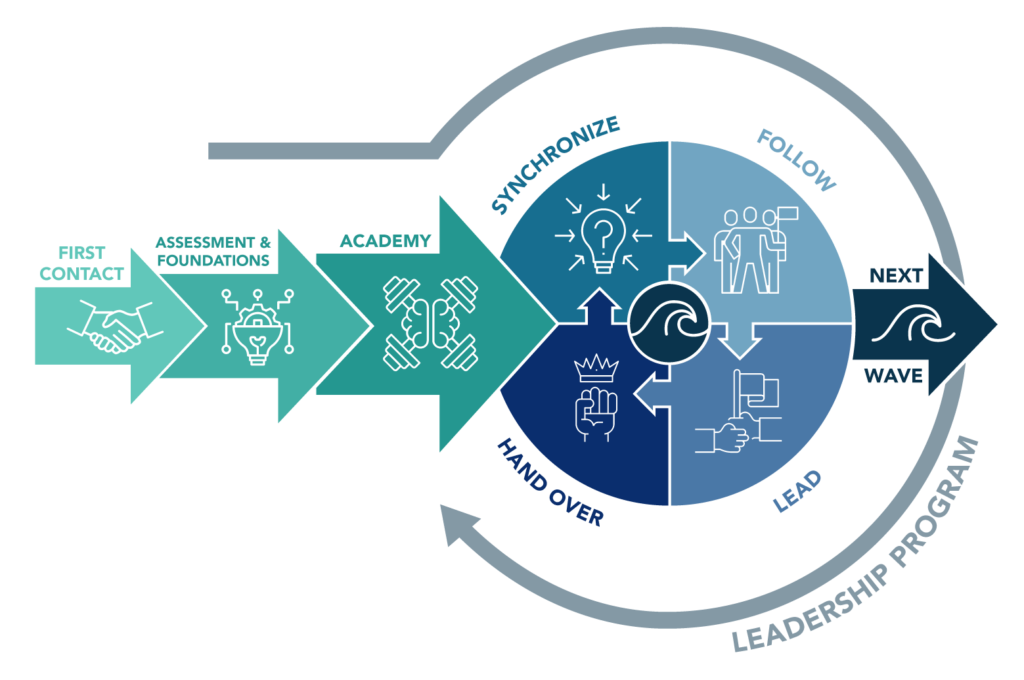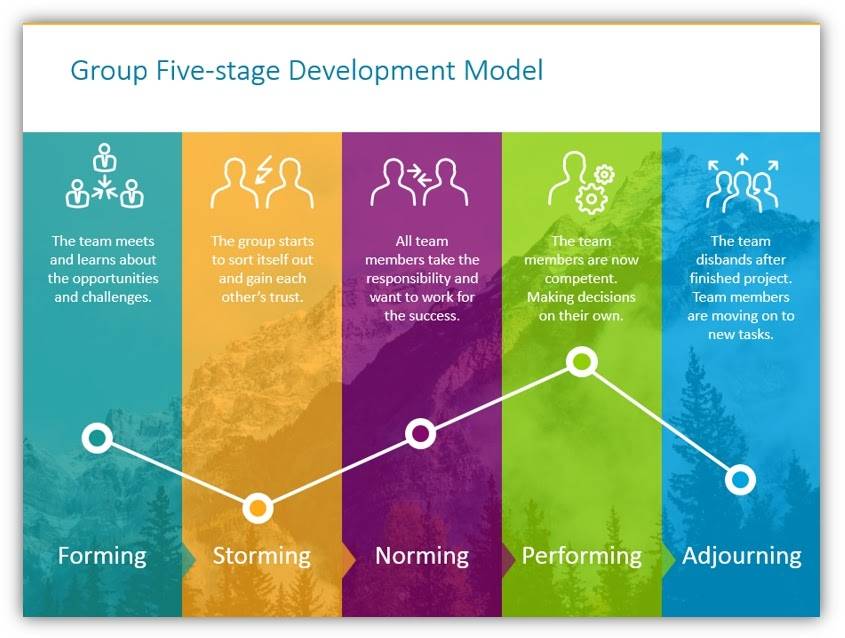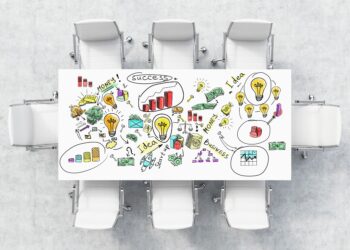This article is the fourth part of a series on how to carry a global agile transformation, from the insights of Arie van Bennekum, co-author of the Agile Manifesto and thought leader at Wemanity. In the first article, we learned about the first contact with the client and their needs to transform. In the second and third, Arie and his team embarked the client on the first stage, key to all transformations: the assessment and foundations phases. In this fourth part, we looked into the first wave of our transformation model, IATM, and how it was carried out.

Welcome back Arie! Following where we left off in our previous article, could you first tell us what the first wave is about, and what role it plays in an agile transformation?
Arie: We decided to carry the client’s agile transformation based on our IATM model, which is split into waves. The goal of the first wave is to set the environment for delivering the rest of the transformation. Every wave, including the first, is divided into 4 coaching phases:
- The Synchronize phase
- The Follow phase
- The Lead phase
- The Handover phase
The success of the first wave is essential for the rest of the transformation, as everybody will take the first transformation team as an example of success. Ultimately, the goal is to make the teams autonomous.
The wave itself is based on the paradigm shift, meaning that the key element we needed to do was to convince the teams to shift their way of working, and help them learn how to adapt. In an agile way, the collaboration with people is different: decision-making, responsibilities for identifying prioritisation, dependencies, power, identification…our roles were to help them adopt an agile way of working.
How did you and your team handle the first wave at the client’s?
Arie: Each wave lasted approximately a month, with a week of preparation beforehand.
We were deeply involved in helping the managers in becoming focused on the transformation team, and for the team to learn all the basic steps. In order to do so, we held coaching masterclasses, coaching on one-to-one and a variety of certifications programs.
1. The Synchronize phase
The Synchronize phase is first and foremost about understanding the rules of the game and what to expect from the assessment. We introduced them to the different agile rituals: daily, retrospective, heartbeats, sprint planning… and how to apply them on a weekly basis.
As simple as it may sound, even something like a daily can be hard to grasp for most people – even the ones already working in an agile way. While the Scrum Guide 2020 dropped the need of the 3 opening questions – what did you achieve yesterday, what will you achieve today and are there any impediments – I am personally still fond of using them, especially towards beginners.
- The first sprint was focused on knowledge transfer
In order to facilitate it, we delivered tailor-made trainings per team and individual ones per role: HR, IT, marketing, etc. as each department faces different challenges. Some teams learned faster than others – likewise, one coach might have finished with their team while the other would still be working. In the end, our role was to bring everything together into shape.
- The second sprint was focused on building a proper workspace
We made sure that every action converged into proper agile transformation “requirements”: user stories, epics, Definition of Done, as well as educating on visual management (plan boards, product backlogs, sprint backlogs, burn down, burn up white boards) to reinforce the concept of transparency.
Setting up a team space is essential to ensure that future teams will adopt those rituals smoothly. At this stage of the wave, the transformation team has gained basic knowledge and set up their workspace, but aren’t able to apply them autonomously yet.
2. The Follow phase
The second phase, Follow, is centred on the team. The objective is ultimately to build the team dynamics and develop the team’s performance. During this phase, a lot of support is required, and coaching guidance and guidelines are still needed. Similarly to the Synchronize phase, we worked in two sprints of two weeks each. The goal was to help the people involved in working as a team and towards the transformation process.
- The first sprint’s goal was to discipline on all the team rituals and visual management in place
As the transformation team started from scratch, it was essential to create a team building dynamic. In order to do so, we followed the phases of team development: forming, storming, norming, performing and adjourning.

Storming, known as the “low” point in a team’s development, especially needed strong leadership and support from the coaches.
- The second sprint was focused on refining the team rituals and developing the internal communities
During this phase, we helped to refine the sprint backlog and ensured all rituals, especially the heartbeat, were properly understood and applied, and included all stakeholders (and not only the client sponsor, as it was the case).
As we kick-started the first wave before Golden Week in China (holidays season), we made sure to introduce what we call a “coach swap”: switching the coach of the transformation team to another one, and observing how it works out. The goal is to have a fresh look on how the team works. As such, we switched the coach working with the Czech team to the Chinese one and vice versa. Ultimately, we decided to keep them as it is, as it turned out to be more effective that way.
3. The Lead phase
The third step of the IATM is focused on individual role and self-learning. The objectives were to understand each team members’ needs to help them develop into multi-disciplined agile professionals.
- The first sprint was focused on identifying individual needs for team improvement
In this phase, our coaches took a step back to observe and talked individually to people about their job function. These 1-to-1 sessions held were based on self-improvement: “Beside the Definition of Done and your job, what else would you like to do and to take on?”
The choice is up to them: whether it is about improving oneself in automated testing, development, prioritization…It is about personal freedom. People used to have predefined roles, and be told : this is your role, and to be able to do it, this is what you have to learn. Going from that to an agile professional and deciding what you want to learn is considerable change, especially for the client’s Chinese teams in this case.
Because they were afraid of repercussions, some team members would struggle to decide by themselves. In the old hierarchical structure, if you say something different from what your manager says, you put yourself at risk.
- The second sprint was focused on starting to share the knowledge and the first step into technology
Following the individual sessions, we gathered the teams for a re-assessment and ranked them based on the assessment model we had developed earlier. Similarly, we wanted the same ranking for the internal coaches, which in the end worked really well.
As a collective, we re-assessed teams to give them recommendations and decide which areas to focus on later.
4. The Handover
The ultimate phase of the wave, known as the handover, consisted in making the teams autonomous to carry out the work for future waves.
Unfortunately, this phase came to a halt as the pandemic situation disrupted the whole transformation process and forced everyone in China back home.
In a non-Covid context, the team was presumed to start working on their own and ask for coaching support if needed – what we call ‘coaching on demand’, with a coach that visits the feature teams regularly for checkup. As the transformation unfortunately came to a stop, the re-assessments made were handed over to the client.
In that sense, the pandemic forced us into another paradigm shift: before the sanitary crisis, everyone was thinking that remote could be possible yet in a first transformation, the real work requires to be on-site. If a similar situation were to happen again, we would prepare much better and shift to remote working.
What was the outcome of the agile transformation?
Arie: Ultimately, we were very satisfied with the outcome: everything in the first wave itself was delivered. Close to 300 people were trained and coached, in over 25 teams. Every team had its own backlog in place and the agile rituals were executed with the required participants.
The agile rituals were also linkedin to visual management, in a way that made all the information available. The Agile Coach Academy was finalised, delivering 25 coaches not only ready for shadow coaching like right after the Academy, but also as independent coaches. For each team there had been, a re-assessment resulting in a team specific set of recommendations could taken in right after. The only outcome we couldn’t achieve was the delivery of the leadership program. Due to COVID-19 we could not be on-site and doing this remotely, right after restrictions came into place, was unfortunately too early in the crisis to feel comfortable about.
All in all, you have to keep in mind that the first wave is always the most difficult one as it is about building up steam for the next ones. In this particular case, the fact that we worked with a multicultural team definitely brought its share of benefits and made for interesting interactions, with its share of struggles as well.
I will admit that we had some regrets and frustrations with the fact we couldn’t come full circle with the transformation, although most of the mapping out for the first wave was done.
In the end, there is no perfect way of working: each one is different depending on the organisation. The only thing we can recommend is to keep improving, and keep learning!












